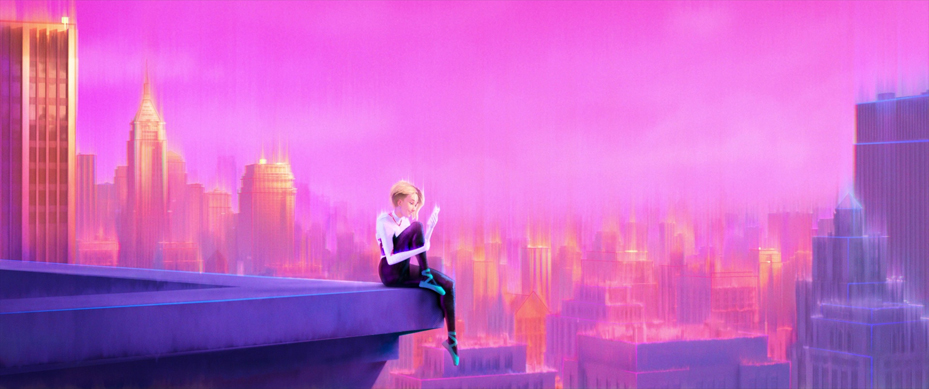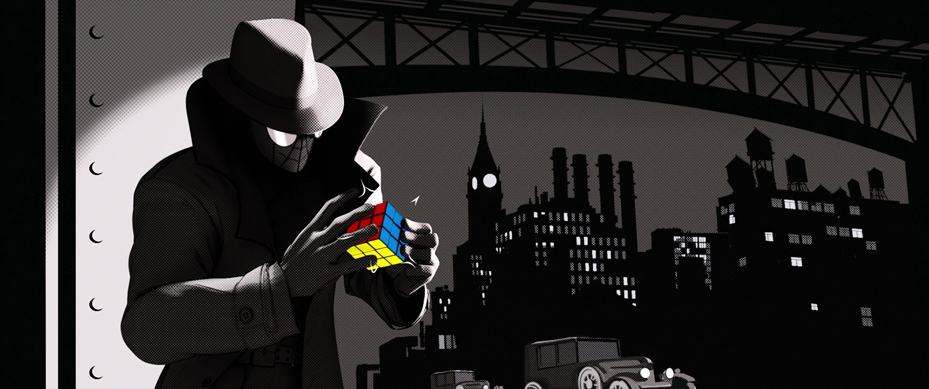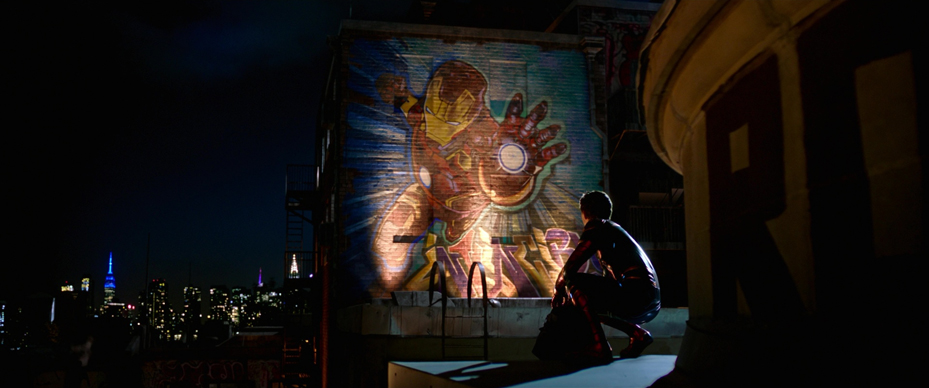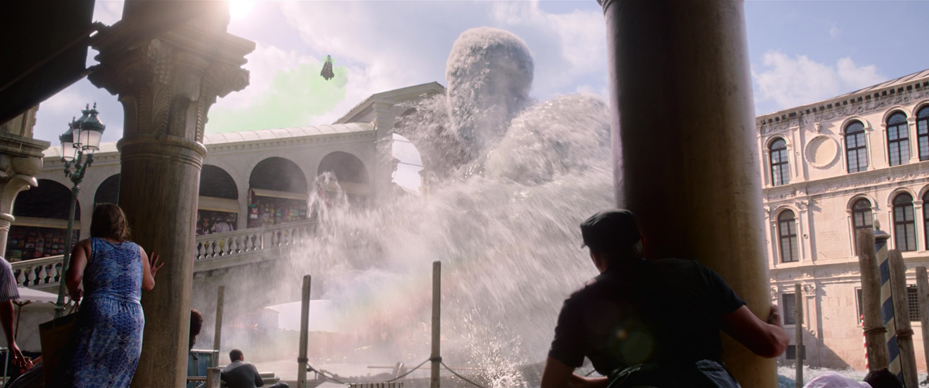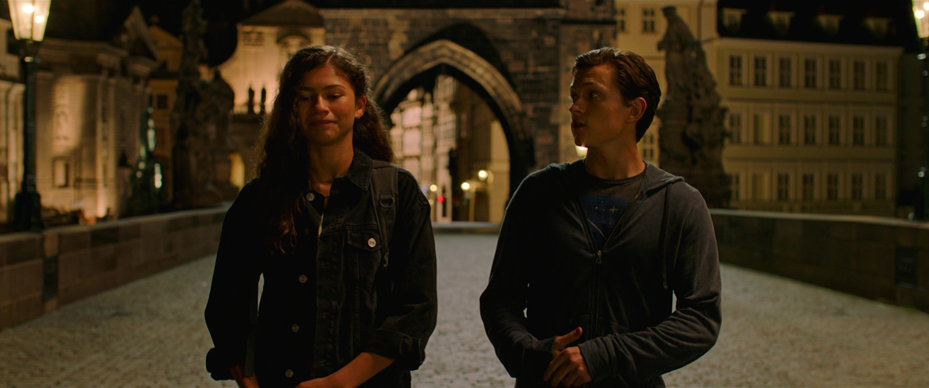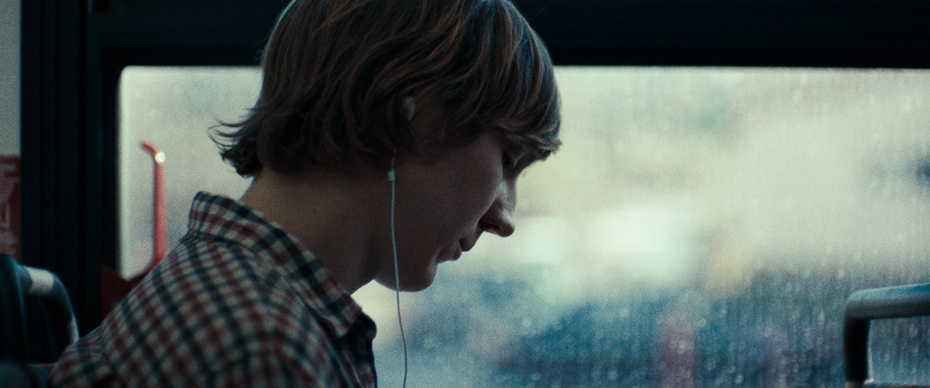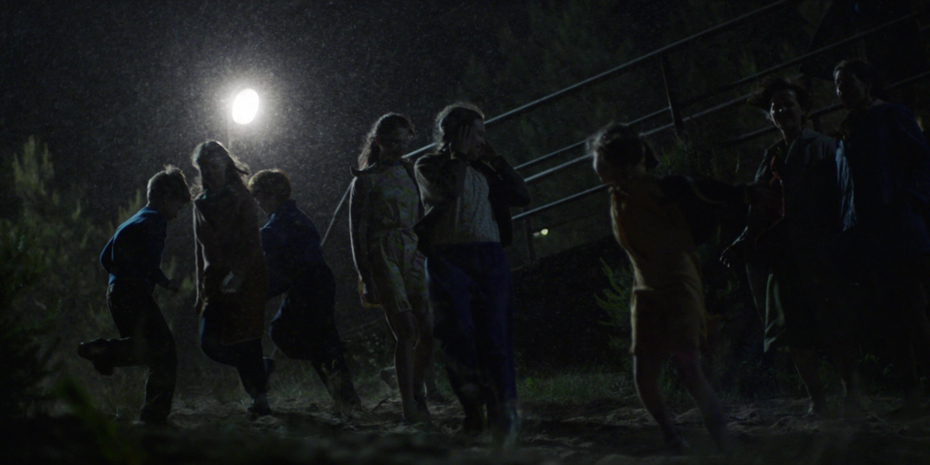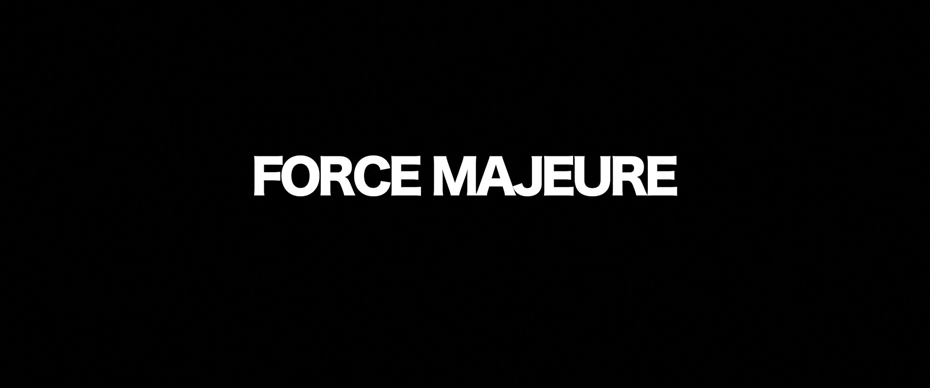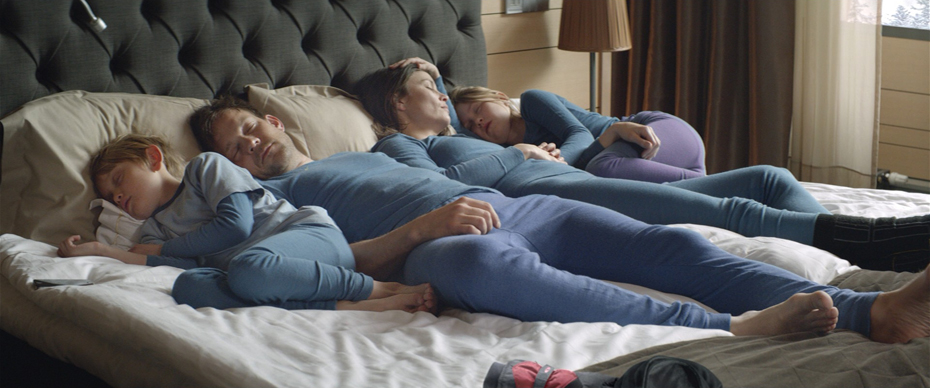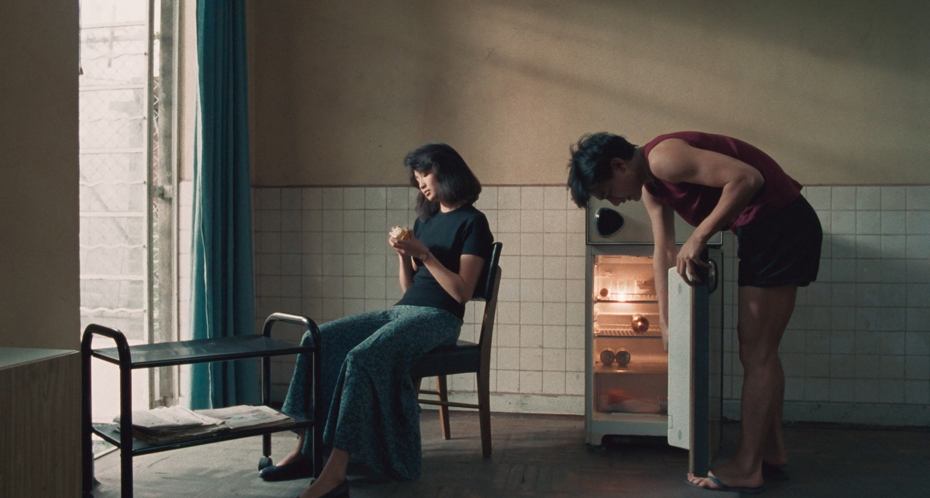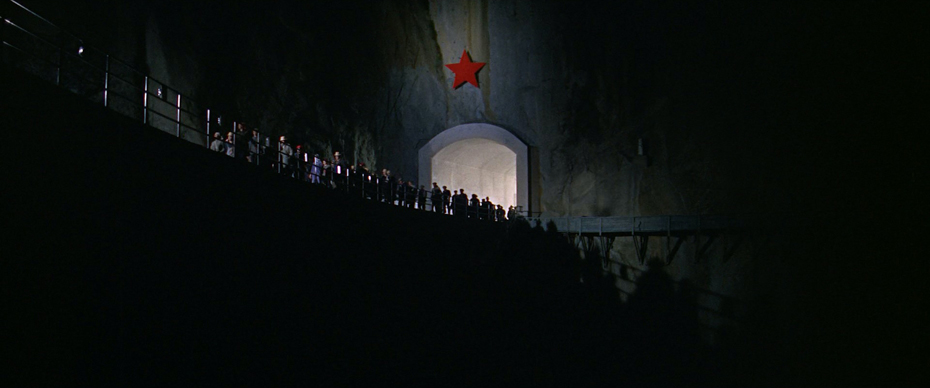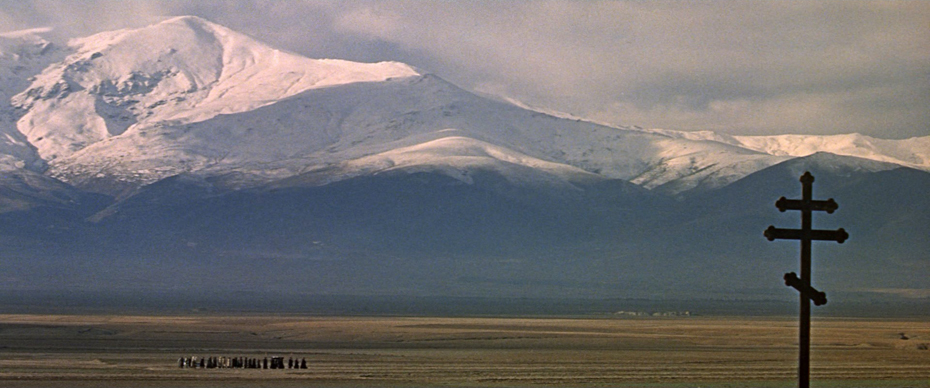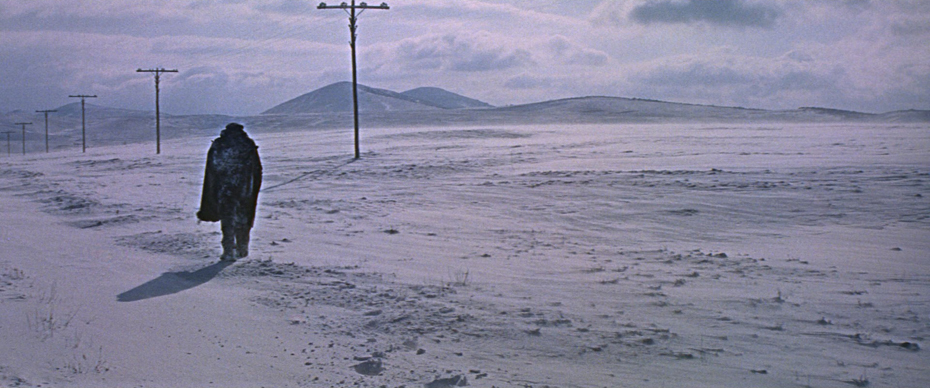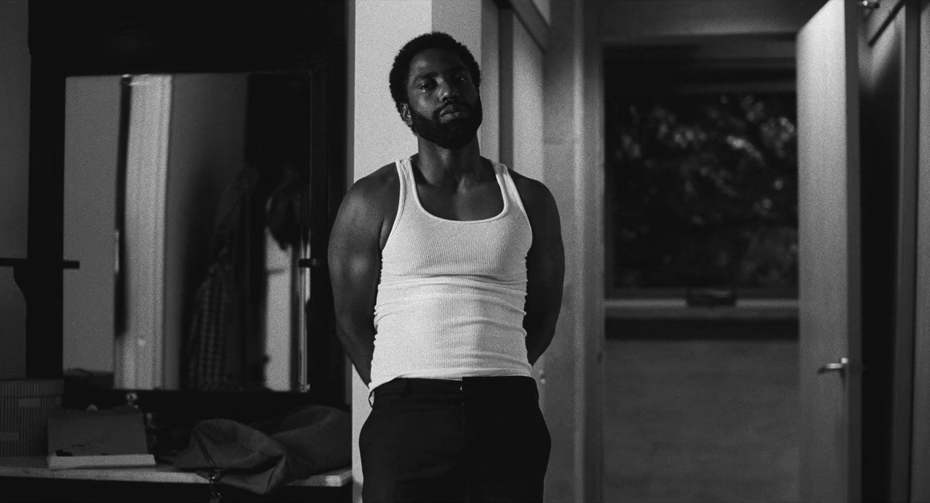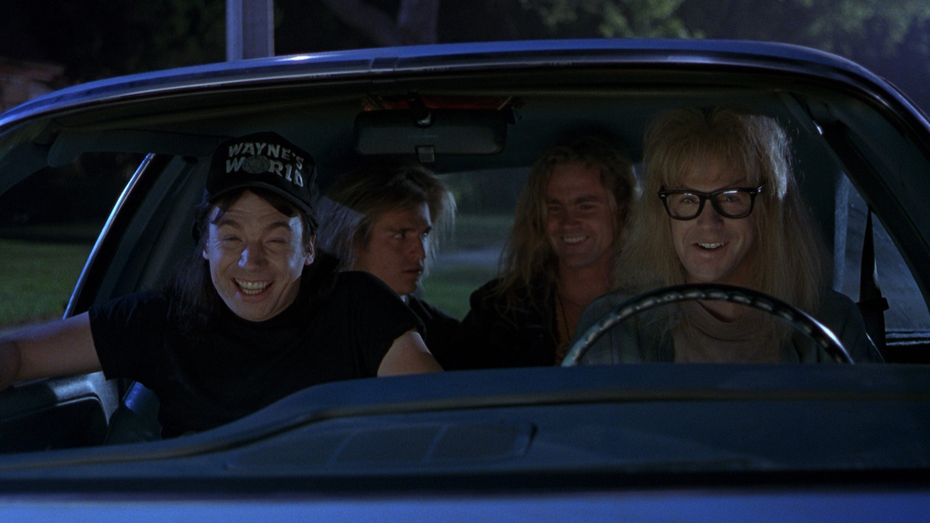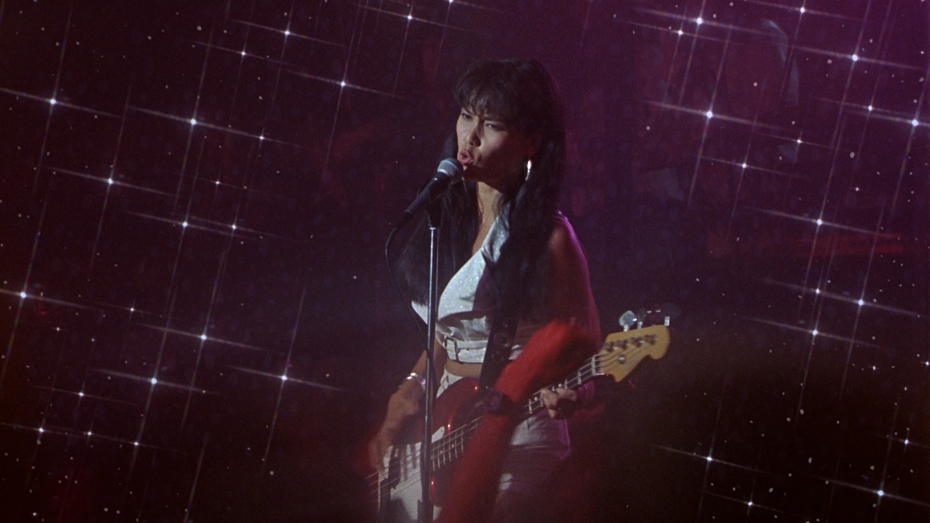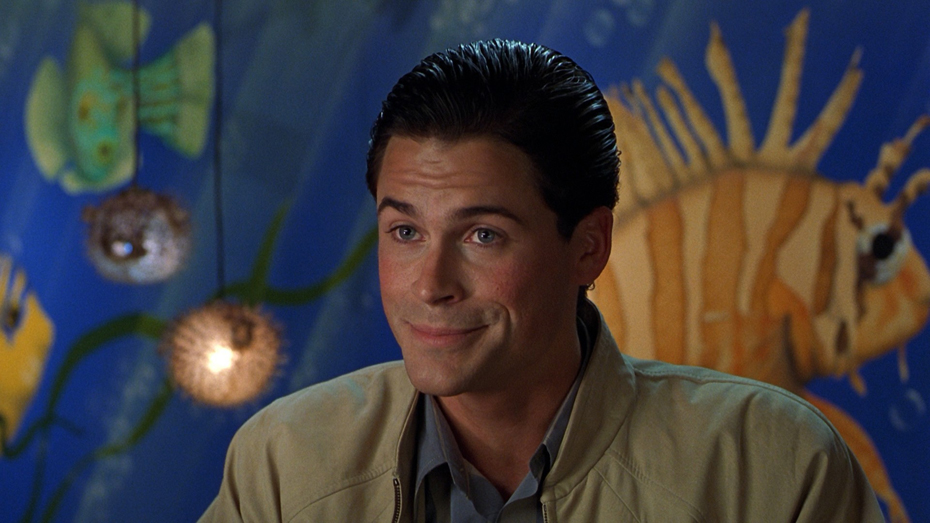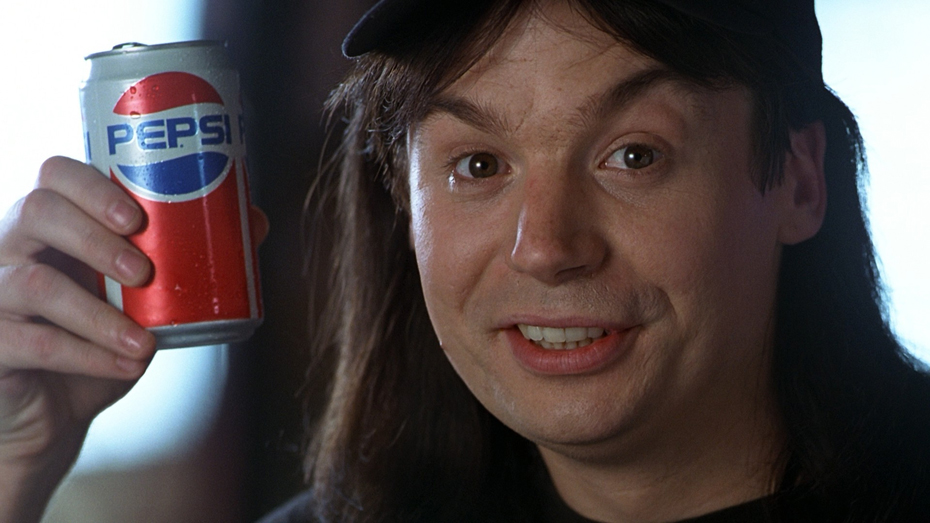THE TUESDAY DROP: 3400+ New Shots
07.05.22 Get your Decks ready ShotDeck Team! We’re adding a lot of content this week, including shots from the Chernobyl HBO Miniseries, Spider-Man: Into the Spider-Verse, and Swiss Army Man. Check them out below, and remember you can always request films for future drops by clicking here!
SPIDER-MAN: INTO THE SPIDER-VERSE is a 2018 computer-animated superhero film directed by Bob Persichetti, Peter Ramsey, and Rodney Rothman (in Persichetti and Rothman’s feature directorial debuts) from a screenplay by Phil Lord and Rothman, and is the first animated film in the Spider-Man franchise. The film follows Brooklyn teenager Miles Morales, who suddenly develops mysterious powers when he is bit by a radioactive spider in the subway, which transforms him into Spider-Man. But when he meets Peter Parker, he soon realizes that there are many others who share his story from parallel universes. It stars Shameik Moore as Morales, alongside the voices of Jake Johnson, Hailee Steinfeld, Mahershala Ali, Brian Tyree Henry, and Lily Tomlin. Spider-Man: Into the Spider-Verse won an Academy Award for Best Animated Feature, making it the first non-Disney / Pixar film to win the award since Rango in 2011.
The creative team of Spider-Man: Into the Spider-Verse wanted to create a new animated visual language for the film that felt like a comic book come to life, separating it from the animation style that had become standard for computer animated films. Initially working with animation lead Alberto Mielgo, the team spent over a year crafting a look that involved taking frames that were rendered using CGI and then layering 2D animated lines, dots and shapes on top of them. The animation team (which grew to over 170 at one point) also used motion smearing instead of the more commonly used motion blur CGI technique to exaggerate movement and heighten the feeling of watching a comic book come to life. The team also varied frame rates, animating in ones (24 fps) and twos (12 fps, doubling images), sometimes in the same shots, for creative effect. For example, the first time Miles and Peter fly through the city as Spider-Men, Peter Parker was animated in ones, while Miles was animated in twos. The effect was that Peter’s movement was smooth, while Miles’s was more rough and “crunchy”, showing his relative inexperience as a Spider-Man.
SPIDER-MAN: FAR FROM HOME (2019)
SPIDER-MAN: FAR FROM HOME is a 2019 American superhero film based on the Marvel Comics character Spider-Man, directed by Jon Watts, and co-written by Chris McKenna and Erik Sommers. It is the sequel to the 2017 film Spider-Man: Homecoming and the 23rd film in the Marvel Cinematic Universe. The film stars Tom Holland as Peter Parker / Spider-Man, alongside Samuel L. Jackson, Zendaya, Cobie Smulders, Jon Favreau, J. B. Smoove, Jacob Batalon, Martin Starr, Marisa Tomei, and Jake Gyllenhaal. In the film, Parker is recruited by Nick Fury (Jackson) and Mysterio (Gyllenhaal) to face the Elementals while he is on a school trip to Europe. Spider-Man: Far From Home grossed over $1.1 billion from its $160 million budget. Watts worked on the film with American cinematographer Matt Lloyd, who had previously worked on projects such as Insecure, and Robot & Frank.
Watts and Lloyd spoke early on about visually capturing Spider-Man: Far From Home as a road movie, with a distinct look and feel given to each city that Spider-Man visits on his European adventure (all while remaining within the general sandbox of Marvel Cinematic Universe films). Lloyd was insistent on capturing each practical location as authentically as possible, scouting extensively on location to plan shots with Watts. Lloyd also worked closely with the VFX teams of the film from an early stage, making use of pre-visualization technology to plan the thousands of VFX shots that appeared in the film so that they folded into the final look of the film as seamlessly as possible.
SWISS ARMY MAN (2016)
Daniels’ (Daniel Scheinert and Daniel Kwan) feature debut, SWISS ARMY MAN, is a 2016 absurdist dark comedy starring Paul Dano, Daniel Radcliffe and Mary Elizabeth Winstead. The film follows a hopeless young man named Hang (Dano) who befriends a dead body (Radcliffe) and begins a surreal journey to get home. Swiss Army Man premiered at the 2016 Sundance Film Festival, where it won the Directing Award in the US Dramatic category. Daniels worked on the film with American cinematographer Larkin Seiple, who had previously worked with them on their short film Interesting Ball and the music video Turn Down for What, and would go on to collaborate with Daniels on the 2022 film Everything Everywhere All at Once.
Seiple and Daniels wanted the look and feel of Swiss Army Man to diverge from the silliness of the film’s premise – Daniels’ initial thesis was to make a movie with the stupidest premise they could come up with, and make it the most beautiful movie they possibly could. To avoid the feeling of it being a slapstick comedy, Seiple drew from influences such as All The Real Girls to make the film feel raw and underexposed, using anamorphic lenses to break up the image and give it a distinct texture. Seiple shot the film on the Arri Alexa XT using Cooke lenses – favoring the 50mm lens for most of the shots, with a 75mm lens for close-ups. Seiple stayed at a T2.8 on the iris for most of the shoot, as it helped with the edge sharpness on the lens while maintaining some of its more beautiful aberrations. Given the tight schedule, limited budget and practical forest locations, Seiple worked intensely with First AD Jesse Fleece to ensure that the schedule worked around the sun and the weather as much as possible, opting for a lighting approach where they would try to backlight as many shots as possible with the sun (so it wouldn’t be as big of a problem if it went behind a cloud), and added negative fill and eyelight as needed.
CHERNOBYL: SEASON 1 (2021)
CHERNOBYL is a 2019 historical drama television series based on the 1986 Chernobyl nuclear disaster and the cleanup efforts that followed. The series was created and written by Craig Mazin and directed by Johan Renck, and aired on HBO and Sky UK. The series stars Jared Harris, Stellan Skarskård, Emily Watson and John Ritter. Chernobyl was nominated for 19 prime time Emmy Awards, winning for Outstanding Limited Series, Outstanding Directing and Outstanding Writing. Mazin and Renck worked with British production designer Luke Hull, their collaboration beginning with a shared ambition to focus on the human side of the Chernobyl disaster, rather than trying to make a horror series or something that portrayed a cliched version of the Soviet Union.
All three were insistent on being as faithful as possible to the location and the period, and wanted to additionally create a unified visual language that still conveyed the scale and scope of this disaster. Hull researched Russian street photography, as well as newsreel footage and documentary footage from the period as a starting point, and developed an aesthetic of clashing patterns and colors, as well as one which conveyed the hastily built, not-quite-right mood of towns such as Pripyat, originally built as Russia’s propaganda town. To build the Chernobyl plant itself, Hull began with a 3D model that he and his team built of the original plant, and began scouting locations where they could partially built elements of the set to recreate the reactor. In the end, Hull and his team were able to recreate the entire reactor across three different locations – an unfinished Lithuanian film studio, which was used to build the exploded Reactor Number 4, as well as parts of the interior location, as well as parts of a real RMBK reactor and an old carpet factory.
FORCE MAJEURE (2014)
FORCE MAJEURE is a 2014 dark comedy written and directed by Ruben Östlund, whose title (the film was titled Turist in Sweden) comes from the term force majeure, a contractual clause freeing both parties from liability in the event of unexpected disasters. The film stars Johannes Bah Kuhnke and Lisa Loven Kongsli as a married couple who deal with a growing tension between them, after an avalanche that occurs in the French Alps where they are on holiday with their two children. Force Majeure premiered at the 2014 Cannes Film Festival. Östlund worked on the film with Swedish production designer Josefin Åsberg, and the two would go on to collaborate together again on the 2017 film The Square.
Östlund wanted Force Majeure to take place entirely at the ski resort setting and for the resort to feel like a majestic visual environment. After extensive scouting, the team settled on a resort that Åsberg then enhanced with the VFX team to rebuild mountains and portions of the hotel complex using CG. For the film’s pivotal avalanche scene, Åsberg built a restaurant terrace in a studio in front of a giant green screen. Footage of an avalanche shot in British Columbia, Canada, was added in post-production, with digital snow mist and post-production camera movement to create the sense of the avalanche overwhelming the restaurant.
AS TEARS GO BY (1988)
Wong Kar-wai’s debut feature film, AS TEARS GO BY, is a 1988 action crime drama starring Andy Lau, Maggie Cheung and Jacky Cheung. The film was inspired by Martin Scorsese’s 1973 film Mean Streets and follows a small-time triad member in Hong Kong trying to keep his friend out of trouble. As Tears Go By premiered at the 1989 Cannes Film Festival. Wong worked on As Tears Go By with Hong Kong cinematographer Andrew Lau, who would later go on to become a director in his own right on films such as Infernal Affairs and Revenge of the Green Dragons.
As Tears Go By bears many of the elements in its visual style and treatment that would go on to become hallmarks of Wong Kar-wai’s films. Influenced heavily by films of the French New Wave, in addition to Mean Streets, Wong and Lau created a visual approach that used fragmented frames, subjective camera work and lighting treatments that leant into the neon landscape of its urban environment. These elements allow the film to ultimately create space for the meditations that influenced so many of Wong’s films – loneliness, longing, and the space between people who desire one another.
DOCTOR ZHIVAGO (1965)
DOCTOR ZHIVAGO is a 1965 epic historical romance film directed by David Lean from a screenplay by Robert Bolt, based on the 1957 novel by Boris Pasternak. Set during the Russian Revolution, the film follows a young doctor named Yuri Zhivago (played by Omar Sharif) who falls in love with Lara Guishar (Julie Christie). The film also stars Geraldine Chaplin, Tom Courtenay, Rod Steiger, Alec Guinness, Ralph Richardson, and Rita Tushingham. Doctor Zhivago won Academy Awards in the Best Adapted Screenplay, Best Original Score, Best Cinematography, Best Art Direction and Best Costume Design categories, and is considered one of the most important epic films ever made. Lean worked on the film with British production designer John Box. The pair had previously collaborated on Lawrence of Arabia.
Lean and Box wanted to make a film that was more intimate than Lawrence of Arabia, and decided to shoot the film in Spain, given that the book had been banned in the Soviet Union. The entire set of Moscow was built from scratch outside Madrid, and though the crew was anticipating snow, they filmed during the warmest winter in Spain in 50 years. Some scenes were brought indoors, with artificial snow made from dust from a nearby marble quarry. The “ice palace” at Varykino was filmed in Soria, in a house filled with frozen beeswax. The frozen lake was also filmed in Spain, and Box and his team placed a cast iron sheet over the dried river bed, with more marble dust added on top. Eventually, some of the exterior winter sequences in this 10 month shoot were filmed in Finland and Canada.
HARAKIRI (1962)
Masaki Kobayashi’s 1962 masterpiece HARAKIRI is a jidaigeki film starring Tatsuya Nakadai as rōnin Hanshirō Tsugumo, who requests to commit harakiri (Japanese ritual suicide by disembowelment) within the manor of a local feudal lord, using the opportunity to explain the events that drove him to ask for death before an audience of samurai. Harakiri premiered at the 1963 Cannes Film Festival, where it was nominated for the Palme d’Or, and is considered today to be one of the greatest samurai (or anti-samurai) films ever made. Kobayashi worked on Harakiri with Japanese cinematographer Yoshio Miyajima, who’s filmography includes The Human Condition trilogy and Kwaidan.
Kobayashi and Miyajima approached Harakiri with the intention of expressing the film’s social themes through allegory rather than literally, opting for a visual approach of expressionism rather than naturalism. The pair wanted to undermine the authority of the rigid political systems the film was commenting on with modern, expressive camera techniques such as zooms, fast pans, canted frames and rapid elliptical cutting, with moments of gruesome realism as well. In doing so, the pair undermine the expectations of the genre, creating a new type of samurai film that has remained influential to this day.
JACQUOT DE NANTES (1991)
JACQUOT DE NANTES is a 1991 drama directed by Agnès Varda, recreating the early life of her late husband Jacques Demy in Occupied France, and portraying his interest in the craft of filmmaking. The fictional sections of the film set in wartime Nantes are intercut with brief documentary interludes with Demy as an older man (Demy died 10 days after filming concluded). Jacquot de Nantes premiered at the 1991 Cannes Film Festival.
Varda created a visual and filmic language for Jacquot de Nantes that was composed in a collage-like manner, combining black and white footage of the fictionally reconstructed Demy with color footage of present-day Demy, as well as from his films, mixing stocks that were all held together by the glue of Demy’s own reflections of his life. While Demy’s illness was not explicitly brought up, Varda constantly returned to shots of his skin as an essential component of the film’s visual tapestry, creating a sense of observation and interest in his health and physical condition as a clear motivation for the broader exploration of Demy’s life.
MALCOLM & MARIE (2021)
MALCOLM & MARIE is a 2021 romantic drama produced, written and directed by Sam Levinson, starring John David Washington and Zendaya. The film follows a writer-director (Washington) and his girlfriend (Zendaya) whose relationship is tested on the night of his latest film premiere, when revelations about themselves surface. Malcolm & Marie was the first film entirely produced, shot and released during the Covid-19 pandemic, with filming taking place in secret for 14 days during June and July of 2020. Levinson worked on Malcolm & Marie with Hungarian cinematographer Marcel Rév. Rév and Levinson were collaborators from Euphoria Season 1, and hurriedly went into production on Malcolm & Marie when production on Euphoria Season 2 shut down due to the pandemic.
Levinson and Rev decided early on that given the chamber dramas of the 1950s and 60s that the circumstances of having two actors in one location throughout the film reminded them of (such as Who’s Afraid of Virginia Woolf?), Malcolm & Marie should be shot in black and white. Rev opted to shoot the film on three perf 35mm EASTMAN DOUBLE-X Black and White Negative 5222. This stock was less sensitive, higher contrast and harsher grain structure than the Kodak Vision-3 film that Rev was used to shooting on, but helped him lean into the visual language that he and Levinson wanted for this film, allowing him to light with bigger units, using less diffusion. Rev used an Arricam LT with Zeiss Standard Speed lenses. Given the balance that Levinson was trying to strike between the film feeling like a highly controlled drama and an improvised character study, Rev developed a lighting strategy that involved lighting the exterior of the house with MaxiBrutes and big spotlights, and the interior with LiteMats and TileLights. These LED sources were preferred indoors for their flexibility, and their ability to be hidden in ceilings and behind furniture without showing up on camera.
WAYNE’S WORLD (1992)
WAYNE’S WORLD is a 1992 comedy directed by Penelope Spheeris and written by Mike Myers and Bonnie & Terrie Turner, based on the Saturday Night Live sketch of the same name. The film stars Myers and Dana Carvey as Wayne Campbell and Garth Agar, a pair of heavy metal fans who broadcast a public access television show. The film also features Tia Carrere, Rob Lowe, Lara Flynn Boyle, Brian Doyle-Murray, Chris Farley, and Meat Loaf in supporting roles. Wayne’s World was the tenth highest grossing film of 1992, and has since spawned a sequel and video game series. Spheeris worked on the film with Dutch cinematographer Theo van de Sande, whose filmography includes Blade.
With just 34 days to shoot the entire film, Spheeris and van de Sande agreed on a visual language that would allow for the crew to be as flexible and fast-moving as possible. Spheeris and van de Sande wanted to expand the visual language set out in the skit and create a more cinematic look that still held true to the nature of the world that Wayne, Garth and their friends occupied. van de Sande shot Wayne’s World on 35mm film using the Panavision Platinum and Panavision Spherical lenses, using Kodak 5247 and 5279 film stocks, pulling the 5279 by two stops to minimize the grain in the final image.















